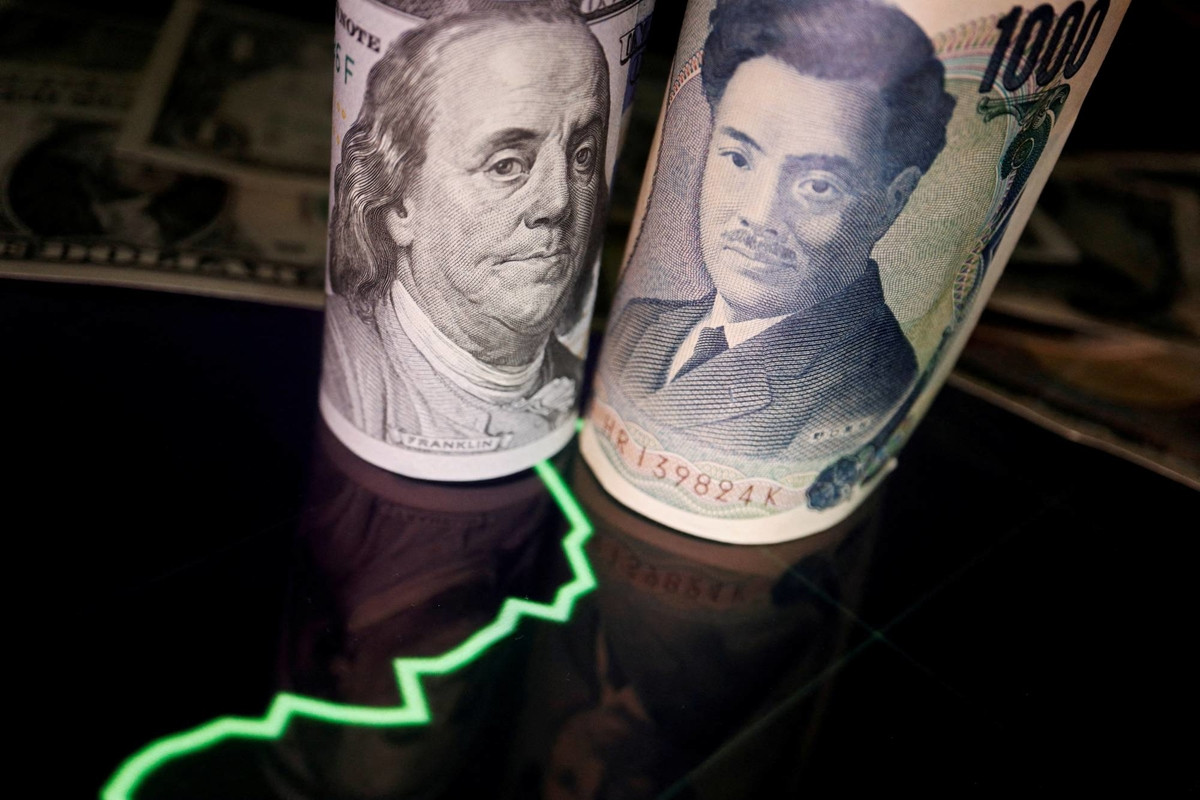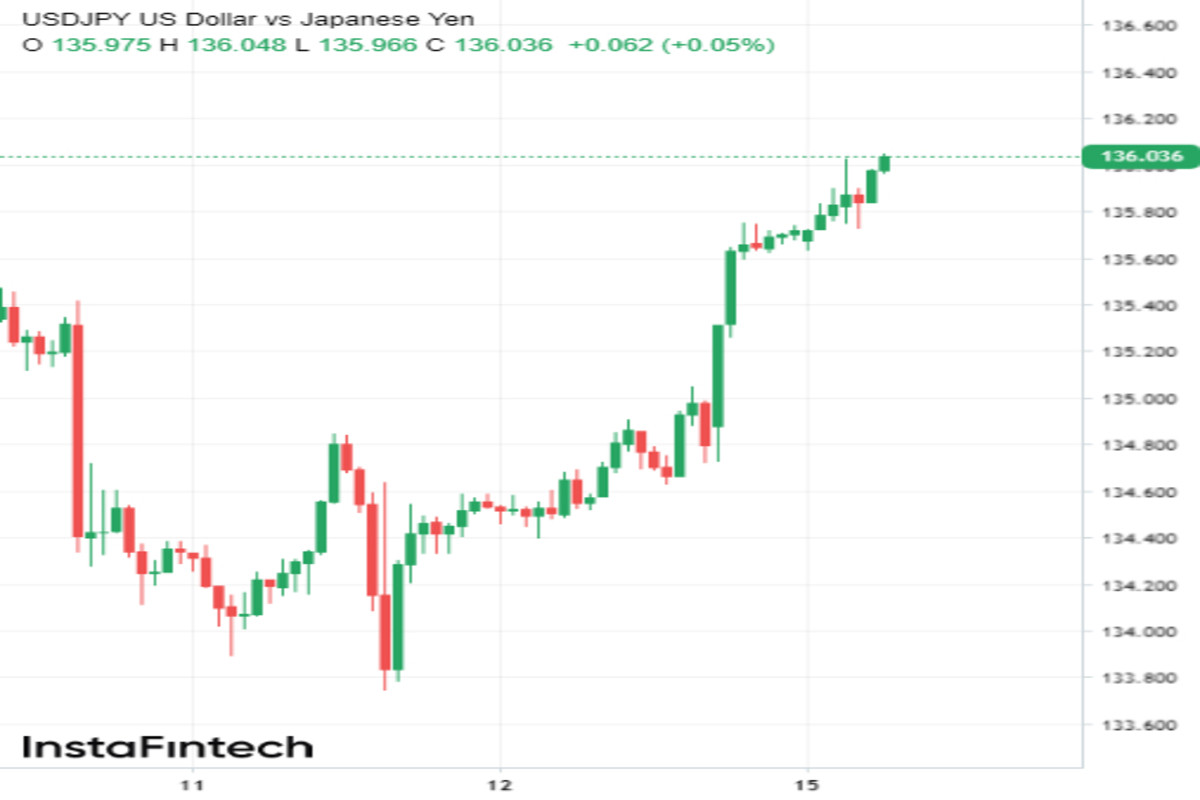
Last week, the dollar/yen pair showed the best upward dynamic compared to other major pairs that contain the US dollar. Most analysts suppose that the pair will continue gaining in value in the next few days. Let us find out what will boost the quote and how high it may climb.
1. The ongoing US debt crisis
During the past week, the US currency demonstrated its strongest weekly growth since February. From Monday to Friday, the DXY index strengthened by 1.4% against its main rivals.
The main driver of the greenback's growth was the mounting fear among investors about a possible default in the US. Notably, the world's largest economy is on the brink of bankruptcy due to problems with public debt.
A few months ago, US public debt exceeded the limit set by the government. To avoid default, the Treasury took emergency measures but has already reached a new limit.
At the beginning of May, US Treasury Secretary Janet Yellen openly stated that by June, the funds for repaying the public debt might run out and the country would have no choice but to declare bankruptcy.
The only solution to this problem is to raise the debt ceiling, but not all US politicians agree with this. Republicans, who have a majority in the Senate, are opposing changes in legislation.
Last week, US President Joe Biden tried to reconcile them with Democrats, who, on the contrary, advocate for raising the limit. However, a compromise has not yet been reached.
It is expected that this week, the US president will again meet with congressional leaders to persuade them to find common ground on the debt issue.
If these negotiations also prove fruitless, it will further increase the risk of default, which, according to analysts, will lead to another surge in the dollar.
A very reasonable question arises here: why is the greenback growing if the US is about to go bankrupt? The reason is that a default is likely to be a disaster not only for the US but for the whole world.
US Treasury Secretary J. Yellen warned about this a few days ago. In her opinion, an American default could lead to a collapse in the global economy.
Fear of a global recession has forced traders to flee from risky assets and seek shelter. The best defensive currency for many turned out to be the dollar, not the Japanese yen, which continues to experience strong dovish pressure from the BOJ.

2. Strengthening hawkish sentiment regarding the Federal Reserve policy
In the middle of last week, a report on inflation in the US for April was released. The data was cooler than forecasts, which significantly weakened the market's hawkish expectations concerning the future monetary policy of the Fed.
Last Friday, futures traders estimated the likelihood that the regulator would raise interest rates at its next meeting in June at just 2%.
However, over the weekend, investors revised their forecasts, raising the probability of a June interest rate hike in the US to 13%. What made them change their opinion?
Analysts believe that the change could be explained by the publication of the consumer inflation expectations index by the University of Michigan at the end of last week.
According to the survey, long-term inflation expectations (5 years) jumped to the highest level since 2011. This brought back a more hawkish scenario, implying another round of tightening and less sharp rate cuts by the end of the year.
Traders' sentiment was also influenced by fairly tough comments from members of the Fed Reserve. Last week, several US officials indicated that they expect a continuation of aggressive policy.
Among them were Fed Board of Governors member Philip Jefferson and his colleague Michelle Bowman, Federal Reserve Bank of St. Louis Head James Bullard, and Federal Reserve Bank of Minneapolis President Neel Kashkari.
Summarizing all the comments, one can see that the Fed still considers inflation a serious problem that requires additional measures to solve.
This indicates the possibility of another round of tightening and keeping rates high for a longer period.
Analyst Elaine Stokes believes that at this stage the market is overreacting, expecting aggressive rate cuts by the end of the year.
The expert predicts a rather smooth easing as inflation in the US will still remain above the central bank's target level of 2%. This should keep the Fed from drastic steps in the dovish direction.
If traders start to actively bet on such a scenario in the near future, this should support the dollar against all currencies, including the yen.
3. Fewer speculations about a possible change in the BOJ policy
One more positive factor for the USD/JPY pair is that traders are revising their forecasts regarding the Bank of Japan's future policy.
Until recently, the market was full of speculation about the imminent normalization of the BOJ's monetary course. Many investors hoped that the Japanese central bank would start taking steps in a hawkish direction as early as June.
However, fresh macroeconomic data and new comments from Bank of Japan Governor Kazuo Ueda may cause the opposite effect.
This morning, the market received another argument in favor of the BOJ's further maintenance of ultra-soft policy. The report on the growth of wholesale prices in Japan again turned out to be weak, which intensified traders' fears about a possible decline in consumer inflation in the country.
According to statistics, in April, the pace of wholesale price growth slowed down from 7.4% to 5.8% on a yearly basis. This is already the fourth consecutive drop in the indicator. Notably, inflationary pressure caused by imports is noticeably weakening.
The recent release of producer prices in Japan also pointed to a slowdown in the price growth in the country. Last month, the PPI index fell to 0.2% m/m and 5.8% y/y against the forecasted 0.3% and 6.0%, respectively.
Softer inflation data does not support the yen. Last week, Bank of Japan Governor K. Ueda warned that the BOJ would keep interest rates in negative territory until it sees a steady increase in prices driven by domestic demand and wage increases.
The summary of the Bank of Japan's April meeting, which was published last week, contains many comments indicating the need to monitor the further situation with wage increases.
Apparently, the BOJ realizes the risk that the wage increase this year was a one-time event aimed at calming workers who suffered from high inflation.
If we do not see a continuation of the wage increase trend in the near future, this will further convince the market that inflation in Japan is likely to take a downward turn. This will finally put an end to the hawkish scenario for the BOJ, at least in the next few months.
Such a scenario will be unfavorable for the yen, leading the USD/JPY pair to new highs.
Technical picture for the dollar/yen pair
A clear upward breakout of key moving averages indicates further growth in the USD/JPY asset.
However, there are several risks for dollar bulls right now: the RSI is above the overbought level, and MACD signals have become more sluggish.
If buyers ignore the above-mentioned negative fact, the possibility that we will see a jump in the rate to the previous monthly high of around 137.80 and to the annual peak marked in March of around 137.90 cannot be ruled out in the near future. If the price hits this level, it may rapidly climb to 138.00.
 English
English 
 Русский
Русский Bahasa Indonesia
Bahasa Indonesia Bahasa Malay
Bahasa Malay ไทย
ไทย Español
Español Deutsch
Deutsch Български
Български Français
Français Tiếng Việt
Tiếng Việt 中文
中文 বাংলা
বাংলা हिन्दी
हिन्दी Čeština
Čeština Українська
Українська Română
Română

